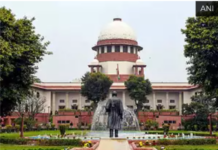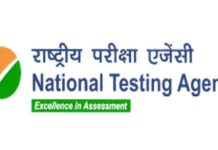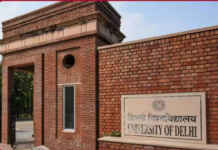Capitalization of the Health Sector: Money and Health
Health is something that is considered a crucial right of every citizen. It has also been classified as one of the basic needs of human beings. This makes a moral obligation to the government to provide accessible and affordable health services to every person without any discrimination. However, how viable are these lines outside the paper? What is health insurance aiming at and why? Are hospitals too classified by the status of the person? How many patients of government hospitals are satisfied with the services they get in these hospitals? What is the scope of the middle class if not covered in the Ayushman Bharat Yojna of government? This blog shall deal with aspects and ramifications of gradual capitalization of the health sector in the economy.
Whose responsibility if you are ill?
In a socialistic economy health, education, food, water and all other expected basic needs are considered to be the responsibility of government and no private institutions are allowed to operate in these spheres. The former USSR is an apparent example in this case. However, the model of economy which we are following is the mixed economy model. It postulates that while allowing private institutions to operate, the government will intervene whenever required. Thus, we are following a ‘socialistic pattern’ of society.
This system has its ramifications as there is no fixed responsibility. Thereby dividing society into two categories. It includes those who have ample amounts of capital and will pursue luxurious health treatment in hospitals. On the other hand, those who don’t have an ample number of resources will be served in government hospitals and newspapers will be aware of their functions which are especially exposed during the COVID pandemic. It is not an allegation on the responsibility of the government, but it becomes necessary to highlight the fact that even if the beds in private and costly hospitals were vacant during COVID-19, no person with low economic status could get treated there. Even when it could have reduced the pressure on government machinery.
Middle class in the middle of the sea
On one hand, those who are controlling the means of production and have ample amounts of money in their hands will pursue costly hospitals in cases of any chronic and acute illness. Ayushman Bharat covers all those who are in BPL and can be classified as poor. The middle class, who has an average income on the other hand is lying in the middle of the sea. Chronic diseases such as Cancer are too costly to afford. Thus, having no benefit from any of the schemes the only option that remains in the hands of the middle class is to depend on hoaxes of health insurances whose extraction itself has ample number of terms and conditions. Despite this fact, this class is forced to pursue it at least to get financial safety against diseases.
This has made this health insurance industry up to a 637 billion dollar industry making it a profitable sphere for business. When business enters, the motive gets turned to earn profit and how much the conditions of the patient are cared for, remains an unanswered question.
Although the financial backbone is necessary to run any institution what if it is getting clashed with having the right to equal and quality health for all? In any civilized society if I am ill, how viable it is to question who will take care of me when I lack finances and belong to the middle class?
Just as the distinction exists between private and government schools, this distinction is apparent in the case of hospitals too that is providing the proof of having three classes of patients when we want to get treated depending on the presence of money in hands.
How satisfactory are government hospitals?
By recognizing this need there are thousands of government hospitals existing all over the country. It is a subject of politics especially in Delhi where the state government has aimed to raise the quality of government hospitals and was somewhat successful in the same sphere. However, government hospitals are unfortunately notorious for their functioning in the country.
But there are a lot of problems which the government is currently facing for the same: –
(1) Deficient infrastructure-
The management of public property becomes difficult when it tends to frequently depreciate.
(2) Deficient manpower-
Although stiff competition is there in medical examinations, however, seats remain vacant
(3) Unmanageable patient load-
The ideal patient-doctor ratio must be 1 doctor per thousand patients however it is 2500 patients per doctor and limited infra making it an unmanageable patients load
(4) Equivocal quality of services-
The quality of government hospitals needed to be equivocated to the standards that are required to bridge the gap
(5) High out-of-pocket expenditure-
More investments in the health sector which are required to manage the expenditures of patients.
The way forward:
Thus, we required machinery to solve the problems arising from the increasing capitalization of the health sector. This can include the following steps: –
-
In situ production of medicines: –
If medicines are being produced in India itself we can avoid the import charges which will help to reduce the total charges of medicines making them affordable.
2 Filling vacant seats in medical colleges: –
Still, 2454 seats are vacant medical seats are there. All the medical and non-medical seats must be filled as soon as possible.
3. Uniform pricing for medicines: –
The government through its machinery must ensure a uniform pricing for similar medicines. This must be approved by a single certification institution.
4. Extending the scope for Aayushman Bharat Yojna:-
If the benefits of this scheme get extended to the middle income group, then it will help patients to get treated without any financial burden on them. Provisions must be there for middle class too with some required exceptions
5. Cancer must be the responsibility of government:-
Cancerous diseases are the kind of diseases that not only required heavy machienary and infrastsucture for recovery but also it requires the drugs and therapies that are too much costly to affort even for higher middle income group. Thus through specialized institutions and with the help of industrailists, cancer must be the repsonsibility of government to have sooth medical treatement.
In a nutshell we shall conclude that health is something which is subjected to be the topic of elections every year. Thus the promises here must be maintained. India really requires a branded health infrastructure that foreign citizens also get ready to pay for treatement here.
References
images- freepik images























